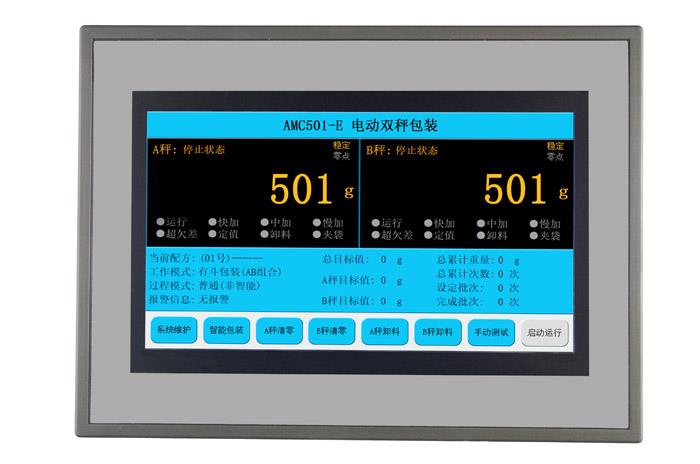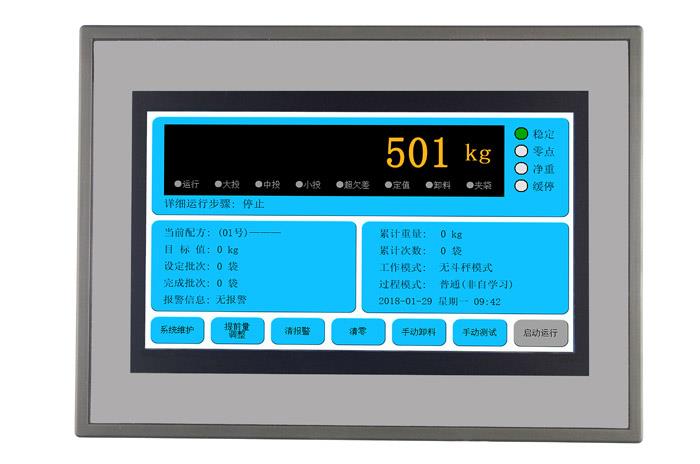
2019-06-01
With the improvement of the continuous and precise metering control requirements for materials, especially solid materials, in the industrial production process, a new type of metering equipment that can meet the requirements was produced in the 1990s. .The weightless scale instrument is used to continuously and accurately measure the material according to the change of the material weight on the scale body. The appearance of the weightless scale instrument has gradually replaced the original belt scale, spiral scale, and even accumulating scale. As a new measurement method, In metallurgy, mining, chemical industry, chemical fiber energy industry has been more and more widely used.
The loss-in-weight scale instrument is a kind of weighing equipment with intermittent feeding and continuous discharging. Since the loss-in-weight control is carried out in the hopper, it can achieve high control accuracy and the structure is easy to seal, so it is suitable for powder control. Compared with the spiral scale, it is a big improvement. It is suitable for the control and batching of fine materials such as cement, lime powder and coal powder.
At present, the continuous mixing equipment in our country is measured by the volume method or the belt scale and the spiral scale. The measurement accuracy of the belt scale used in the highway industry in my country can generally only reach about 5%, which is almost the same as the volume measurement, and the long-term stability is relatively high. Difference.
to achieveWeightless scale instrumentFor the continuity of feeding and the accuracy of measurement, a large silo for continuous feeding and an automatic valve for feeding feeding are required on the upper hopper. There is an upper feeding limit and a feeding lower limit in the control instrument. When the control instrument weighs the weight on the scale body reaches the lower limit of feeding, it will send a signal to open the feeding valve to open the valve, and the material in the large silo will go down to the upper hopper through the soft connection. The weight on the scale body will increase. When the control instrument weighs the weight on the scale body to reach the set feeding upper limit, it will send a signal to close the valve to close the valve. During this process, the feeding motor It is always in operation, which means that the feeding is continuous. For those materials with poor fluidity, relatively light and relatively thin materials, a part of the weight will not be added to the scale body within a short time after the valve is closed. If the weightless scale instrument performs PID control according to the signal sent by the sensor, the weight change felt by the sensor will become smaller during this time period, resulting in inaccurate signal distortion control. For this reason, there is also a feeding delay in the control instrument. The time is counted from closing the valve. During the period from the start of feeding to the end of the feeding delay time, the feeding motor will maintain the same frequency before feeding, in other words, the weight loss scale during the process The instrument is in a fixed frequency operation state—static control. When the feeding delay time expires, the weightless scale instrument automatically resumes dynamic control, that is, the feeding motor is controlled according to the signal sent by the sensor. The operation process of the weightless scale instrument is like this. .

In order to improve the control accuracy of the weightless scale instrument, the following points should be considered in the design:
1) Select the appropriate frequency of use, the best use frequency of the weightless scale instrument is kept at 35Hz40Hz, when the frequency is too low, the stability of the system is poor;
2) The selection of the sensor range is appropriate, and it is used at 60% to 70% of the range, and the signal variation range is wide, which is conducive to improving the control accuracy;
3) The mechanical structure design should ensure that the material has good fluidity, and at the same time ensure that the feeding time is short.
4) The supporting transmission system should ensure smooth operation and good linearity.

1 10, 2025

1 10, 2025